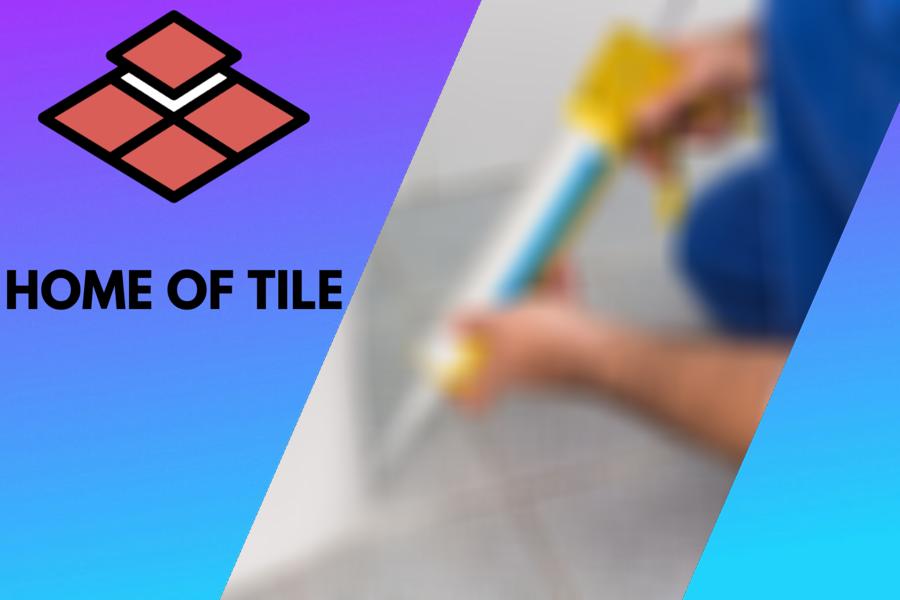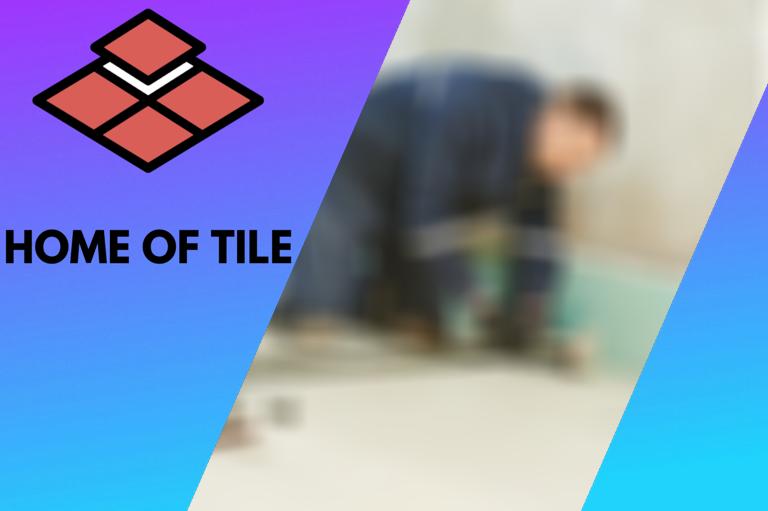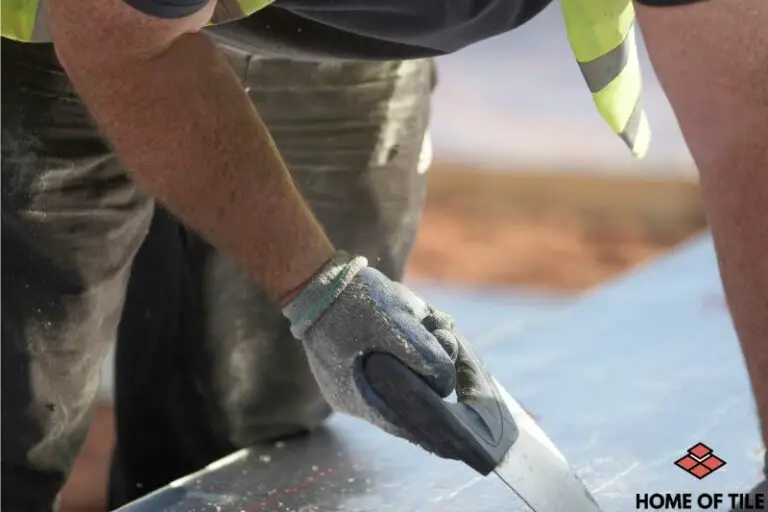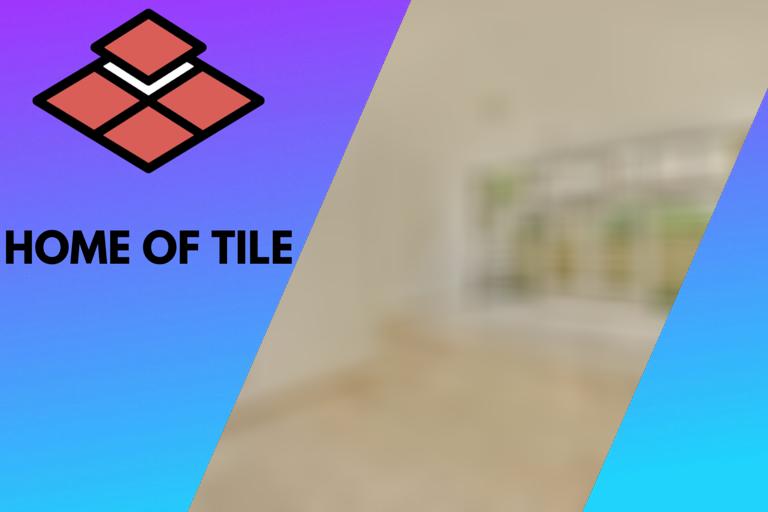Tips for Tiling Around a Toilet. 25 things you should know
Tired of your old bathroom decor but dreading the thought of tiling around the toilet? Worry no more! Our comprehensive guide on ‘how to tile around a toilet’ breaks it down for you, easing your renovation journey.
How to tile around a toilet:
Tiling around a toilet may seem daunting, but proper planning, tools, and techniques make it manageable for beginners. Key steps include measuring the space, choosing tiles, gathering essential tools, laying tiles with a dry layout, cutting tiles if necessary, grouting the tiles, and adding a grout sealer. Reinstall the toilet and enjoy a long-lasting, professional-looking tile finish.

In this content, you’ll learn a step-by-step process for expertly tiling around a toilet, including essential materials and practical tips from professionals. As a result, you’ll create a stunning and long-lasting bathroom design in no time.
Contents
- 1 How to Professionally Install Tiles Around a Toilet
- 2 Is it Necessary to Install Tiles Around a Toilet or Underneath It?
- 3 How can you install tiles without removing a toilet?
- 4 What is the process for installing tile around a toilet flange?
- 5 What is the necessary proximity of the tile to the toilet flange for proper installation?
How to Professionally Install Tiles Around a Toilet
Tiling around a toilet can seem intimidating, but it’s manageable for beginner DIYers with the proper planning, tools, and techniques. I will walk you through the essential steps for a successful tiling project.
• Preparing for the Project
Before you jump into tiling, there are a few crucial tasks to complete to ensure that the project goes smoothly and you’re happy with the final result.
– Measure Your Space
Begin by carefully measuring the area you plan to tile. This includes the floor area around the toilet and any walls you may be planning to tile. Be sure to consider any irregularities in your space, such as pipes or fixtures, that must be accommodated.
– Choose Your Tiles
Once you have accurate measurements for your space, you can consider what type of tile you’d like to use. Tiles come in various materials, sizes, and shapes, so choosing a tile that will work well with your space and meet your desired aesthetic is essential.
– Gather Your Tools and Materials
In addition to your chosen tiles, you’ll need a few essential tools and materials to complete this project. These include:
- Tile saw or tile cutter
- Tile spacers
- Notched trowel
- Level
- Rubber grout float
- Grout
- Tile adhesive
- Bucket and sponge for cleanup
- Tape measure
- Pencil or marker for marking cuts
• Laying the Tiles
With proper preparation complete, you can now begin the process of laying your tiles. Follow these step-by-step instructions to ensure a quality finished product.
1. Find the Center Point and Chalk Guidelines
First, locate the center point of your space by measuring the distance between each pair of opposing walls and marking the midpoint. Using a level or straight edge, draw a guideline through each midpoint to divide the room into four equal quadrants.
This will help ensure that your tiles are evenly spaced and provide a reference point as you work.
2. Dry Layout
Before applying any adhesive or cutting, lay out your tiles in a dry run to visualize your final design and make any necessary adjustments. Begin laying your tiles in one quadrant, working outward from the center point. Use tile spacers to ensure even spacing and maintain grout lines.
Pay particular attention to the space around the toilet flange, as you may need to make partial cuts to fit the tiles in place properly.
3. Preparing the First Quadrant for Tiling
Remove the dry-laid tiles and thoroughly clean the surface, ensuring no dust or debris might interfere with the adhesive’s bond.
Starting in the first quadrant, use a notched trowel to apply a layer of tile adhesive onto the floor at a 45-degree angle, spreading an even layer across a small section of the work area.
4. Setting the Tiles
Begin setting your tiles into the adhesive in the same order as your dry layout, using tile spacers to maintain proper spacing and grout lines. Press on each tile firmly and wiggle it slightly to ensure a strong bond with the adhesive.
Continually check your work with a level to ensure that your tiles are laid evenly. Repeat this process for each quadrant, one at a time, and adjust tiles as needed to fit around the toilet flange.
5. Cutting Tiles if Necessary
Sometimes, you may need to cut tiles to fit around the toilet or other obstacles. Follow the manufacturer’s instructions to carefully cut your tiles as needed using a tile saw or tile cutter.
• Grouting the Tiles
After allowing the adhesive to set according to the manufacturer’s recommendations, typically at least 24 hours, it’s time to grout the tiles.
1. Mix the Grout
Prepare your grout mixture according to the package instructions, ensuring a smooth, lump-free consistency.
2. Apply the Grout
Using a rubber grout float, spread the grout across the tile surface, pressing firmly to force the grout into the spaces between the tiles. Hold the float at a 45-degree angle and work diagonally across the tiles, wiping away excess grout.
3. Cleanup
After applying grout to the entire area, use a large, damp sponge to gently remove any remaining grout from the tile surfaces. Be sure to rinse the sponge frequently as you work to avoid spreading grout residue.
4. Allow the Grout to Set
Allow the grout to set for the amount of time specified by the manufacturer. Remember that some grouts may require additional time to cure fully before being sealed or moisture exposure.
• Final Steps
After the grout has been set completely, consider applying a grout sealer for additional protection and ease of cleaning. You can reinstall your toilet with the complete tiling, ensuring it sits level and forms a watertight seal around the flange.
Congratulations! You’ve successfully tiled around your toilet, creating a durable, attractive finish lasting years.
Step | Description |
|---|---|
1 | Measure and mark the tiles that must be cut to fit around the toilet flange. |
2 | Prepare the area by removing old flooring and baseboards and cleaning the area accordingly. |
3 | Layout the tiles and determine the appropriate pattern and placement in relation to the toilet flange. |
4 | Reinstall the toilet, replace the toilet wax ring and properly secure it to the flange. |
5 | Use a tile cutter or wet saw to cut the marked tiles according to your measurements. |
6 | Apply tile adhesive to the floor and begin laying the tiles around the toilet flange, including the cut tiles. |
7 | Use grout to fill the joints between the tiles and allow it to dry for at least 24 hours. |
8 | Clean the grout and apply a grout sealer as directed by the manufacturer. |
9 | Reinstall the toilet, replace the toilet wax ring, and properly secure it to the flange. |
Is it Necessary to Install Tiles Around a Toilet or Underneath It?
• Pros and Cons of Tiling Under a Toilet
One of the most significant decisions you will encounter regarding bathroom renovations is whether to tile under or around the toilet. Let us first explore the pros and cons of tiling under a toilet:
– Pros
- Aesthetics: Tiling under the toilet creates a seamless look that contributes to your bathroom’s cleaner, more polished appearance.
- Easier to clean: With no visible gaps between the flooring and the toilet base, it is much easier to clean and maintain the area around the toilet.
- Easier to replace: In the future, if you decide to replace your toilet or upgrade the flooring, the process will be much more straightforward as there will be no need to cut or remove the old tiles.
- Better support: Depending on the size and design of your toilet, tiling under it can provide additional support beneath the fixture.
– Cons
- Higher costs: Tiling under a toilet requires you to remove the toilet during installation, which can increase the project’s costs.
- Complicated installation: Tiling under a toilet requires more skill and expertise since the tiles must be carefully cut to fit around the toilet flange and any pipes or connections.
- Possibility of damage: When tiling under a toilet, there is an increased risk of damaging the plumbing fixtures or the toilet flange during installation.
• Pros and Cons of Tiling Around a Toilet
Now that we have explored the advantages and disadvantages of tiling under a toilet let us move on to the pros and cons of tiling around a toilet:
– Pros
- Cost-effective: Tiling around a toilet does not require removing and reinstalling your toilet, thus saving you time and money.
- Easier installation: Since the toilet remains in place during tiling, there is less need to cut and shape the tiles for a precise fit.
- Less risk of damage: Tiling around a toilet reduces the risk of damaging the toilet, flange, or other plumbing connections.
– Cons
- Aesthetically inferior: Tiling around a toilet can result in visible gaps between the toilet and the flooring, which some people may find visually unappealing.
- Harder to clean: These gaps can accumulate dirt and grime over time, making the area around the toilet more challenging to clean and maintain.
- Potential for uneven support: Depending on your toilet’s design and size, tiling around it may result in uneven support beneath the fixture, which could cause issues with stability.
• Making a Decision: Factors to Consider
With a clear understanding of the pros and cons of tiling under and around a toilet, there are some key factors to consider before making a decision:
- Budget: If budget is a concern, tiling around a toilet can be a more cost-effective option. However, if you can afford to spend a little extra on your project, tiling under a toilet may provide a more aesthetically pleasing result.
- Skill level: If you are planning to tackle this project yourself, consider your level of skill and expertise. Tiling under a toilet is more complicated and requires greater precision. If you are not confident in your abilities, it may be best to stick with tiling around the toilet or hire a professional to do the job.
- Aesthetics: Consider the finished appearance of your bathroom and whether the potential gaps between the toilet and flooring will be an issue for you. If you prefer a seamless look, tiling under the toilet may be a better choice.
- Cleaning and maintenance: If ease of cleaning is a priority, tiling under a toilet can make it much easier to maintain the area around the fixture.
In conclusion, deciding to tile under or around a toilet is subjective and depends on budget, skill level, aesthetics, and maintenance preferences.
I recommend assessing your situation and weighing the pros and cons of each approach before deciding the best course of action for your bathroom renovation project. In any case, ensure that the tiling job is done correctly and professionally to avoid any issues down the line.
| Do you tile around a toilet or under it? | |
|---|---|
| Tiling around a toilet | A common and easier method involves cutting tiles to fit the shape of the toilet base. |
| Tiling under a toilet | Requires removing the toilet, providing a more uniform look and easier cleaning, but more labor-intensive. |
How can you install tiles without removing a toilet?
Tiling a bathroom floor without removing the toilet can be tricky, but it’s not impossible. I will guide you if you want to save time and money while giving your bathroom a fresh look.
I will discuss the necessary tools and materials, how to prepare the bathroom floor, and the best techniques for laying the tiles around the toilet. Finally, we’ll provide some expert tips to ensure a professional finish.
• Essential Tools and Materials
Before starting your tiling project, gather the following tools and materials:
- Tiles of your choice
- Tile spacers
- Tile cutter or wet saw
- Thin-set mortar or tile adhesive
- Grout
- Notched trowel
- Grout float
- Tape measure
- Spirit level
- Pencil or chalk line
- Protective gear (gloves, goggles, and knee pads)
- Clean, damp sponge and a bucket of water
- Soft cloth or towel
- Utility knife and silicone caulk for sealing edges
• Preparing the Bathroom Floor
For a successful tiling project, it’s crucial to have a clean, level, and stable surface to work on. Follow these steps to prepare your bathroom floor:
- Clean and inspect the floor: Remove any debris, dirt, or dust from the surface using a vacuum or soft brush. Inspect the floor for any signs of mold, loose tiles, or damaged subfloor. Address these issues before proceeding.
- Remove baseboards and trim: Use a pry bar to remove any baseboards or trim from the walls. This step ensures that your new tiles will fit properly against the walls.
- Level the floor: If your floor has high or low spots, use a self-leveling compound to create an even surface. Follow the manufacturer’s instructions and allow the compound to dry before proceeding.
- Apply a waterproof membrane (optional): If your bathroom is prone to moisture or water spills, consider applying a waterproof membrane to the subfloor. This step provides extra protection against water damage.
• Lay Out the Tiles
Before you start cutting and installing the tiles, planning your layout is essential. This step ensures a symmetrical and visually pleasing result. Follow these steps:
- Find the center of the room: Measure the length and width of your bathroom floor, and mark the center point with a pencil.
- Arrange your tiles: From the center point, lay your tiles on the floor in your desired pattern. Use tile spacers to maintain consistent gaps between the tiles.
- Check for symmetry: Confirm that the tiles align with the walls and the toilet base. Adjust your layout by shifting the tiles to hide the cut edges against the walls or under the toilet bowl if necessary.
- Mark your starting point: Once you’re satisfied with your layout, mark the position of the first tile with a pencil or chalk line. This point will be your reference for installing the tiles.
• Cutting and Installing the Tiles
Now that your layout is planned, it’s time to cut and install the tiles. Follow these steps for a smooth installation process:
- Mix the thin-set mortar or tile adhesive: Follow the manufacturer’s instructions for mixing the mortar or adhesive. It should have a thick, peanut butter-like consistency.
- Trowel the adhesive: Starting at your marked reference point, use a notched trowel to spread the adhesive on the floor. Hold the trowel at a 45-degree angle to create ridges in the adhesive.
- Install the first tile: Firmly press the first tile into the adhesive, wiggling it slightly to ensure good adhesion. Follow your marked guidelines for placement.
- Continue laying the tiles: Install the remaining tiles, using spacers to maintain consistent gaps. Periodically check your progress with a spirit level to ensure an even surface.
- Cut and install the tiles around the toilet: When you reach the area surrounding the toilet base, you’ll need to make curved cuts in your tiles. Measure the dimensions of the toilet base and use a pencil or tile marker to trace the appropriate shape onto the tiles. Use a tile cutter or a wet saw to make the cuts, and dry-fit the cut tiles around the toilet before installing them with adhesive.
• Grouting and Sealing the Tiles
Once all the tiles are installed and the adhesive has dried, it’s time to grout the joints and seal the edges. Follow these steps:
- Mix the grout: Follow the manufacturer’s instructions to mix your chosen grout. It should have a thick, paste-like consistency.
- Apply the grout: Use a grout float to spread the grout across the tile joints, pressing firmly to ensure even coverage. Work in small sections, and clean off excess grout with a damp sponge before it dries.
- Finish the grout: After drying, buff the tiles with a soft cloth or towel to remove haze.
- Seal edges: Use a utility knife and silicone caulk to seal gaps between the tiles, toilet base, or walls. This step prevents water from seeping under the tiles.
• Expert Tips for a Professional Finish
- Choose a grout color that complements your tiles, and opt for a mildew-resistant formula for added protection in wet areas.
- Use a tile leveling system for even results, especially with large-format tiles.
- Allow the adhesive and grout to dry for the recommended time before walking on the tiles or reinstalling baseboards and trim.
By following these steps and expert tips, you’ll achieve a professional-looking tiled bathroom floor without the need to remove the toilet. With patience, careful planning, and proper tools and materials, you’ll have a beautiful new floor that adds value and appeal to your home.
Step | Description |
|---|---|
1 | Measure the area around the toilet where you want to install the tiles. |
2 | Cut the tiles to the desired size and shape to fit around the toilet. |
3 | Prepare the floor around the toilet by cleaning it thoroughly and leveling it, if necessary. |
4 | Apply a layer of tile adhesive to the back of each tile using a notched trowel. |
5 | Remove the tile spacers and apply the grout to the spaces between the tiles using a grout float. Wipe off any excess grout with a damp sponge. |
6 | Use tile spacers to maintain even spacing between the tiles and to hold the tiles in place while the adhesive dries. |
7 | Allow the tile adhesive to dry according to the manufacturer’s instructions. |
8 | Remove the tile spacers and apply grout to the spaces between the tiles using a grout float. Wipe off any excess grout with a damp sponge. |
9 | Allow the grout to dry completely before using the toilet or exposing the area to water. |
10 | Apply a grout sealer to the grout lines to protect them from moisture and stains. |
What is the process for installing tile around a toilet flange?
Laying tile around a toilet flange requires attention to detail and planning to ensure a watertight fit and a professional-looking finish. I will guide you through the process, from preparing the surface and choosing the right tile to cut and installing the tile around the toilet flange.
• Preparation and Planning
– Removing the Toilet
The first step in laying tile around a toilet flange is to remove the toilet. Turn off the water supply valve and flush the toilet to empty the tank. Use a sponge or towel to remove any remaining water from the tank and bowl. Disconnect and remove the water supply line from the toilet tank.
Unscrew the nuts holding the toilet bowl to the floor and lift the toilet bowl straight up and out of the way. Store the toilet safely during the tiling process to avoid damage.
– Preparing the Surface
Before you start tiling, it’s important to ensure that the surface is clean and level. Remove any old flooring and adhesive, and ensure no cracks or damage to the subfloor. Use a leveling compound or install a new underlayment to create a smooth surface.
– Choosing the Right Tile
Select a tile material that is both durable and aesthetically pleasing. Ceramic and porcelain tiles are popular choices since they are easy to work with and maintain. Make sure to choose a tile of the right thickness, considering accessibility around the toilet flange.
Measure the bathroom floor area and purchase enough tiles to cover the entire space, allowing for waste and cuts. Don’t forget to account for the grout lines in your measurements.
• Cutting and Installing Tiles
– Dry Fitting the Tiles
Start by dry-fitting the tiles on the bathroom floor. This process ensures you have the correct layout and the required number of cuts to achieve a professional-looking finish. Arrange the tiles in your desired pattern, ensuring even spacing and leaving a gap around the toilet flange.
Use tile spacers to maintain consistent grout lines during the laying process.
– Cutting Tiles Around the Toilet Flange
Use a tape measure and marker to determine the required cuts for the tiles around the toilet flange. Don’t forget to account for the grout lines in your measurements. A tile saw, angle grinder, or rotary cutting tool can make the necessary cuts precisely.
When cutting tiles, wear appropriate safety gear, such as gloves and safety glasses. Ensure the tiles fit snugly around the flange without touching it, allowing for expansion and contraction.
– Applying Thinset and Installing Tiles
Prepare the thinset mortar according to the manufacturer’s instructions. Use a notched trowel to apply an even layer of thinset to the floor, starting furthest from the door and working toward it. Lay the tiles one at a time, twisting to ensure proper bonding with the thinset. Use tile spacers to keep grout lines consistent and level to ensure a flat surface.
For the tiles around the toilet flange, apply a thinset to the back of the tiles to maintain control over the amount of thinset used. This technique, known as back-buttering, helps prevent excess thinset from oozing onto the flange. Install the cut tiles carefully, ensuring a snug fit around the flange while maintaining a small gap for expansion and contraction.
• Grouting and Finishing Touches
– Grouting the Tiles
After the thinset has had sufficient time to cure according to the manufacturer’s instructions, remove the tile spacers and begin grouting. Mix the grout as per the instructions on the packaging and use a grout float to force the grout into the grout lines.
Clean the tile surfaces with a damp sponge as you work, not removing too much grout from the lines.
– Reinstalling the Toilet
Once the grout has fully cured, it’s time to reinstall the toilet. Replace the wax ring around the toilet flange to ensure a watertight seal. Carefully lower the toilet bowl onto the new wax ring, ensuring proper alignment with the flange and mounting bolts.
Tighten nuts evenly to secure the toilet to the floor. Reconnect the water supply line, turn on the valve, and ensure proper function by flushing the toilet and checking for leaks.
• Conclusion
Laying tile around a toilet flange requires careful planning and attention to detail but can be accomplished with the right tools and patience. By following the steps outlined in this guide, you can achieve a professionally-installed tile floor that enhances the appearance and functionality of your bathroom.
Step | Description |
|---|---|
1 | Remove the toilet and clean the area around the toilet flange. |
2 | Place the cut tiles around the toilet flange, ensuring they are level and evenly spaced. |
3 | Cut the tiles using a tile cutter or wet saw, following the marked lines. |
4 | Apply thinset mortar to the floor using a notched trowel. |
5 | Place the cut tiles around the toilet flange, making sure they are level and evenly spaced. |
6 | Allow the mortar to dry according to the manufacturer’s instructions. |
7 | Apply grout to the tile joints using a rubber grout float. |
8 | Wipe off excess grout with a damp sponge and allow the grout to dry. |
9 | Reinstall the toilet, ensuring a proper seal with the toilet flange. |
What is the necessary proximity of the tile to the toilet flange for proper installation?
When installing a toilet, one of the critical factors to consider is the distance between the tile and the toilet flange. This distance is essential as it can impact the toilet’s stability, the effectiveness of the wax ring seal, and, ultimately, the toilet’s functionality.
I will explore the ideal distance between the tile and the toilet flange, the factors affecting this distance, and some tips to help you get it right during installation.
• The Ideal Distance from Tile to Toilet Flange
In most cases, the ideal distance from the top of the tile to the top of the toilet flange should be approximately 3/8 to 1/2 inch. This height compresses the wax ring seal properly and ensures a stable, leveled toilet installation.
However, some factors may alter the recommended distance, such as the thickness of the wax ring, tile thickness, or the specific toilet model.
– Flange Height Based on Wax Ring Thickness
Different wax ring seals have varying thicknesses, which may require adjustments to the flange height. Traditional wax rings are about 1 inch thick, while extra-thick rings measure 1-1/2 inches.
Consequently, if you use an extra-thick ring, consider raising the flange’s height correspondingly to ensure proper compression and a good seal.
– Tile Thickness Considerations
Remember that thickness can impact the flange height when installing a tile floor in your bathroom. Thicker tiles may lead to a higher finished floor, necessitating an elevated flange position.
Before installing the tile, measure its thickness and adjust the toilet flange to accommodate the increased height.
– Toilet Model Factors
Toilets come in various shapes and sizes, with some requiring specific flange heights for the best fit. It is always a good idea to consult the manufacturer’s installation instructions for the recommended flange height for your particular toilet model.
This information will help you determine the exact distance your tile needs from the toilet flange, ensuring proper installation and reducing the chances of leaks or instability.
• Tips to Achieve the Correct Flange Height
Now that we have established the ideal distance between the tile and the toilet flange, here are some tips to help you accurately achieve the recommended height during installation:
– Measure Accurately
Before installing any components, take accurate measurements of the flange height, tile thickness, and the recommended height for your toilet. Use these measurements as a reference when adjusting the flange height to ensure an ideal fit.
– Adjust the Flange Position
Use toilet flange extenders or spacers to raise their height if your toilet flange is too low. These components are readily available and are designed to fit precisely underneath your flange, allowing you to adjust its position easily.
If the flange is too high, you may need to trim or reposition it to achieve a suitable height.
– Use a Level to Check for Evenness
When installing the tile and adjusting the flange height, use a spirit level to ensure the floor and flange are even. An uneven flange position can lead to an uneven toilet placement, reducing stability and increasing the potential for leaks or damage.
– Test-Fit the Toilet
Before completing the installation process, it is a good idea to temporarily place the toilet on the flange to ensure a proper fit. This test fit can help you identify any issues with the flange height or other components before securing the toilet permanently.
– Follow Manufacturer Recommendations
Always consult the manufacturer’s installation instructions for your specific toilet model. These instructions will provide insight into the proper flange height and other factors that can impact the installation process.
• Conclusion
Achieving the ideal distance between the tile and the toilet flange is essential for a stable, leak-free toilet installation.
Following the recommended flange height of 3/8 to 1/2 inch, considering factors such as tile thickness and toilet model specifications, and employing the tips outlined in this guide, you can ensure a successful and worry-free toilet installation.







